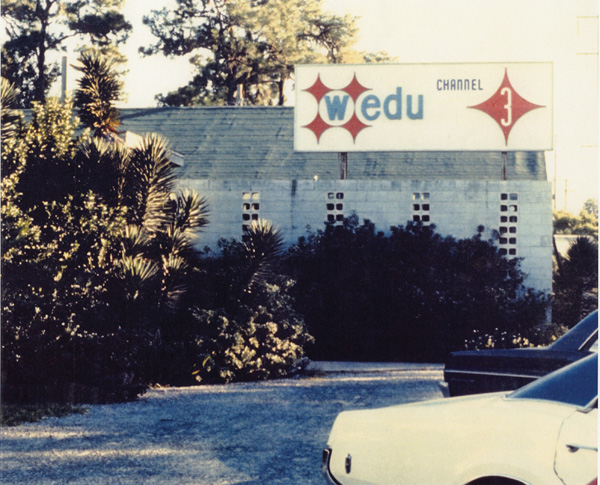
"….MY LIFE CHANGED AT THAT MOMENT…"

While Jim was overseas serving his country, WTVT had grown by leaps and bounds and was now the Tampa Bay area's most popular and prestigious station. A childhood pal of Jim's, Doug Jones, had a father who worked as a salesman at WTVT. "My mother was friends with Doug's dad, Paul Jones," explains Jim. "About three months before I was discharged my mother talked to Paul and Sol Fleischman about getting me an interview at Channel 13 with the production manager, Ken Smith."
A week after returning to Tampa Jim drove his V.W. the six blocks from home to Channel 13 for an hour-long interview with Smith. "Ken talked to me about what they did at WTVT and explained that they didn't have an opening…but he had an idea," recalls Jim. "Ken told me that as soon as a position opened up he'd like to hire me. In the meantime, I should go see about Channel 3 because it would be excellent training. Ken got on the phone to WEDU's production manager, Dick Seifermann, and recommended me. I thanked Ken and went over to Channel 3 where they talked to me for about twenty minutes and hired me on the spot.

WEDU WAS JIM'S FIRST TELEVISION EXPERIENCE
My life changed at that moment. I was now in television. That very night I did my first live television show called This is Florida. It was the show's debut and my job was to stand behind an art card painted with a picture of a bull. There were two holes where the bull's nostrils were. Straws were attached to the back of holes and my job, on cue, was to blow some cigarette smoke through the straws and out the bull's nose…and that was my first job in television."

WEDU PRODUCED A WIDE RANGE OF EDUCATIONAL PROGRAMS
WEDU was a very busy NET (National Educational Television) affiliate with local live instructional programming broadcast to classrooms around the Tampa Bay area. Their original studios were in a former Army barracks off 20th street in Tampa. "I spent my first few months at Channel 3 getting all the bugs out and learning to become a really good cameraman," recalls Jim. "In those days we had four-lens turret cameras…no zooms at all, but with really good pedestals. On-air teachers used a lot of pictures and the better you were at dollying in and out of them the more camera time you got. It took me probably a month and a half to get on camera."

WEDU program with book seller
Charles Haslam
(Courtesy Haslams
Bookstore)
"I guess I had a natural affinity for production. We had about six live shows every day for in-school programs. We would do a half-hour show, take a seven minute break, and then go into another live show. It was back and forth between two studios until 2pm, when school was ending. History, science, civics, Spanish…it was all great training. There weren't as many things to learn those days as there are now. Then, if you wanted a super you'd put white letters on a black board and shoot them with a camera."